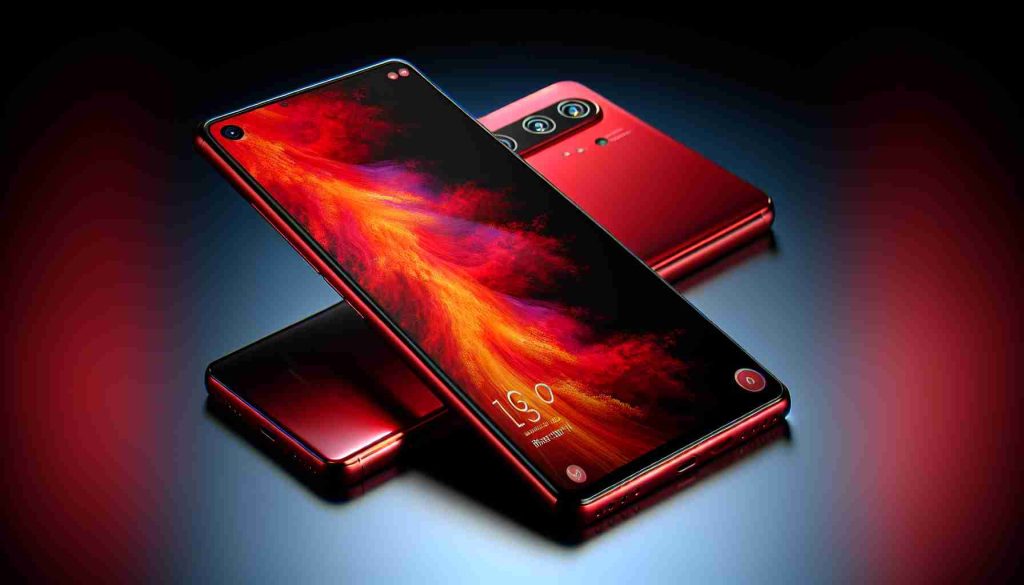In an era where technology advances at a breakneck pace, the concept of a rollable smartphone has captured the imagination of many. Though some of today’s gadgets would have been unimaginable during the days of early science fiction, the intrigue surrounding devices like the potential rollable smartphone is undeniable. Speculation about such a device began circulating online long before the current wave of innovations, hinting at a possible entry called the Galaxy Z Roll.
While companies like Oppo and Motorola have already showcased their versions of foldable smartphones, the idea of a rollable screen adds another layer of excitement. Recently, intriguing patent designs surfaced, suggesting an innovative mechanism where users could expand or retract the display by merely interacting with its back. This concept has fueled discussions about the future of smartphone design.
Despite the growing buzz, details regarding the development of this pioneering technology remain scarce. Enthusiasts and industry insiders are eager to see whether this concept will transition from the drawing board to reality. The sheer potential of a smartphone that functions without the constraints of a fixed screen could redefine user interactions and experiences. As speculation continues, the tech world awaits updates that could herald a new chapter in mobile technology.
The Fascination with Rollable Smartphones: A New Dimension in Mobile Technology
With significant strides in technology, the prospect of rollable smartphones is not just a whimsical idea but a tangible concept gaining momentum in the tech industry. As manufacturers explore innovative methods to expand the functionality and convenience of smartphones, the rollable design provides an intriguing alternative to foldable phones.
Why Are Rollable Smartphones Gaining Attention?
One of the main questions surrounding rollable smartphones is: What advantages do they offer over current smartphone designs? Rollable smartphones promise enhanced flexibility in display size. Users can opt for a compact phone that expands into a tablet-like screen, addressing the need for larger displays while maintaining portability. This adaptability could revolutionize how users interact with their devices, transitioning seamlessly between tasks requiring small and large screens.
Key Challenges and Controversies
However, the journey to mainstream adoption of rollable smartphones is fraught with challenges. One significant concern is durability. Unlike traditional smartphones, which have a defined form, the mechanisms that enable rollable screens must endure constant tension and stress. Moreover, the technology behind flexible displays raises questions about longevity and resistance to wear over time, a major issue for consumers who require reliable devices.
Another challenge comes from production costs. The integration of innovative materials and advanced mechanisms could lead to higher retail prices, potentially limiting consumer accessibility. Manufacturers will need to find a balance between cutting-edge technology and affordability to attract a wider audience.
Advantages and Disadvantages
In assessing the rollable smartphone concept, several advantages stand out:
1. Versatility: A rollable phone can serve multiple functions, adapting to different tasks by altering the screen size.
2. Innovative User Experience: The interaction model may redefine how users use and engage with their devices, promising a more immersive experience.
3. Compact Design: When not in use, a rollable phone could take up less space, making it easier to fit in pockets or bags.
Conversely, challenges include:
1. Durability Concerns: Constant rolling could lead to mechanical failure, making reliability an issue.
2. High Production Costs: The complexity of the design could lead to higher prices, potentially alienating cost-conscious consumers.
3. Market Acceptance: Consumers may be hesitant to switch from traditional smartphones to an entirely new form factor, influenced by usability and familiarity.
What Lies Ahead?
The question remains: When can consumers expect to see rollable smartphones in the market? Various companies are actively working on prototypes, but no definitive release dates have been established. The tech world holds its breath, anticipating breakthroughs in display technology and manufacturing processes that will pave the way for commercial availability.
As manufacturers continue to innovate, the fascination with rollable smartphones grows, opening the door for possibilities previously thought to be the realm of science fiction. The next generation of smartphones could very well change our relationship with technology in profound ways.
To explore further about advancements in smartphone technology, visit TechCrunch for the latest updates.




























